- Home
- James Rollins
The Demon Crown: A Sigma Force Novel Page 22
The Demon Crown: A Sigma Force Novel Read online
Page 22
Submersibles like this were used by various militaries to sneak divers into enemy territory. The sub here looked designed for a similar purpose, especially as Seichan noted the speargun poking above the shoulders of the rider in back.
Equally vexing, she also spotted a pair of steel spear points flanking the nose light. It seemed the sub had its own weaponry.
As the craft entered the debris field, the rider dove sideways off the sled. He swam lower, while the sub angled higher. It looked like the diver intended to search the graveyard and either eliminate or drive any potential targets out of hiding.
Unfortunately, only four or five planes had crashed into the lake, so the number of hiding spots was limited. The diver was surely familiar with those spots. He dropped straight for a neighboring wreck. He pointed the light affixed to his speargun through the shattered cockpit window. The fuselage lit up from within, with beams blazing out of cracks in the hull.
Satisfied that no one was inside, the diver aimed for their shattered plane. He led with his light, shining it between the two halves. Both Seichan and Palu retreated deeper into their respective sections of the plane. With the additional illumination, she could now see the Hawaiian’s face. She pantomimed by lowering her arms and mimicking a bear hug.
Palu squinted behind his mask, his nose crinkling in confusion.
She had to trust he’d figure it out.
As the waters separating them grew brighter, she readied her two weapons, one in each hand as she braced her legs. She waited for the black-steel tip of the speargun to enter her field of view—then tossed her first weapon out into the gap.
The momentum of the diver carried him forward to meet face-to-face the shock of what she had thrown out of the fuselage.
It was the pilot’s skull.
The white bone struck the enemy’s face mask.
Reacting with basic human nature—both at the unexpected attack and the nature of the object staring hollowly back at him—the diver twisted away. He swung his speargun toward Seichan’s half of the fuselage, while falling back toward the other.
Before he could fire, thick arms grabbed him from behind and pulled him into the aft end, like a trapdoor spider pulling in its prey.
It seemed Palu had finally understood.
Seichan kicked off the cockpit seat and flew across the gap. She risked a fast glance up. The sub’s beam searched the wreckage to her left.
Good.
Diving to join Palu, she struck the trapped diver and pressed the barrel of her SIG Sauer against his chest. She angled the barrel up as she fired. The shot was muffled but still loud. She trusted the whining rumble of the sub’s engine would mask the noise. Shooting a pistol underwater was problematic. Most handguns could fire one shot before becoming disabled. Even then, the kill range was limited to less than two feet. She counted on that limitation to keep the slug inside the dead man.
While a dagger made more sense in a close-quarter battle underwater, she feared her target might thrash too much. The blood trail from a large gaping wound would be as obvious as a smoke signal to the hunter above.
Instead, she pulled the barrel away and pinched the hole through his rubbery suit. Once satisfied the diver had succumbed, she scraped a wad of algae from the wall and plugged up the bullet hole. She then snapped the flashlight off the speargun, handed it to Palu, and pointed in the direction of the searching sub.
Pretend to be the diver, she willed him.
He nodded his understanding, shimmied past her, and dove low across the sand. He led with the beam of his light. Palu was roughly the same size as the diver. Hopefully the ruse would last long enough.
Once he was away, Seichan ripped off the dead man’s mask, which covered his entire face. He also had a radio headpiece. She ripped it away, secured it to her own, and switched masks. By the time she blew out the water to clear the mask, darkness had fallen over the plane’s wreckage as the false diver and sub headed away.
She finally abandoned her hiding spot and rose out into the black water.
Despite the pain racking her body, she felt calmer in her natural element, a shadow in the darkness.
A voice whispered in her ear, speaking Japanese. It was the sub’s pilot radioing his partner. “Any sign of the targets?”
Seichan knew a response was needed. The dead diver looked to be Japanese, so she answered in kind, only gruffly. “Ōrukuria.”
All clear.
She continued to rise, drawing level with the slowly retreating submersible. She then set off in its wake. Agony flared with each kick, but she focused on her target, drawing slowly closer.
Below, Palu continued his charade, pausing every now and then to inspect the wrecks, which helped keep the sub idling along.
Ahead, the pilot sat under his hood, silhouetted against the brightness of his craft’s light. She kicked harder, stirring up those fiery embers in her lower belly and legs.
Finally, she whispered into her radio, her Japanese flawless from her youth spent in Southeast Asia. “Movement five meters ahead. Do you see anything?”
The pilot responded, “Nothing from up here.”
Counting on the pilot’s increased focus below, she swept up behind the back of the sled, pointed the stolen speargun, and fired.
The shaft shot through the open back end of the glass hood and impaled the pilot through the neck, nearly taking his head off. Blood bloomed and quickly filled the Lexan dome. Unguided now, the sub slumped toward the bottom, spilling a crimson trail behind it.
Out here alone, she didn’t fear anyone seeing this particular smoke signal. Still, she sped after it. As she reached the sled, she grabbed one of the handgrips on the bottom and propelled herself forward. She manhandled the pilot out of his seat and tossed his body out the back. With his BC vest deflated, his heavy gear dragged his corpse to the waiting graveyard.
Seichan gained the controls. Though she had some experience piloting such craft, she was rusty. Still, after a few attempts, she got the sub spiraling down toward Palu. The Hawaiian had noted the bloody descent of the pilot and waited not far from the body.
Likely making sure it wasn’t me.
Once she was close, he kicked off the bottom and joined her in back.
He pointed up, his expression questioning.
She shook her head and pointed down.
Time to pay the locals a visit.
Before heading off, she took mental inventory. She had an assortment of sheathed daggers hidden all over her body, and her waterlogged SIG Sauer could be dried out and made serviceable again. While it wasn’t a lot of firepower, she would manage. To help her, she would lean upon a skill not taught to her by the Guild, but instead by the father of her unborn child, a man who was the master of lateral thinking, of shrewd improvisation.
If I intend to rescue Gray, then I’d better act like him.
Still, as she turned the wheel and engaged the thrusters, a flare of fire burned through her limbs. Her vision narrowed to a pinpoint. She bunched over the wheel, one palm on her belly, willing the pain away—not from her body, but what she guarded inside.
She breathed heavily, noting the needle in the red zone of her oxygen meter.
Running out of time.
She sat straighter, knowing how true this was for all of them.
Especially one.
As she aimed the sub down, she made a promise—to Gray, to herself, but mostly to her unborn child.
I won’t fail you.
Still, a dark question had been growing steadily inside her over the past hours.
How much am I willing to sacrifice to keep that promise?
22
May 8, 8:55 A.M. EDT
Washington, D.C.
Now what . . . ?
Painter rode up the security elevator from Sigma command toward the first floor of the Smithsonian Castle. He had been summoned from the bowels beneath the museum by its curator, Simon Wright. Painter didn’t have time to waste, but the Keeper of the Castl
e had insisted Painter would want to see this for himself.
If nothing else, I get to stretch my legs.
He had been buried underground all night, taking a brief hour-long catnap around 5 A.M. He had been coordinating with various agencies around the globe. As soon as he put out one fire, another started.
As the elevator doors opened into a security vestibule manned by an armed guard behind a desk, Painter’s phone chimed in his hand. He glanced down and recognized the number. He nodded to the guard, who stood straighter, silently acknowledging Sigma’s director. The room was additionally safeguarded by electronic surveillance and countermeasures. Even the door into this small chamber required a special black keycard with a holographic ∑ embossed on it.
Painter lifted his phone and stepped aside. He held off exiting the private vestibule. “Kat, how is Dr. Delgado doing?”
“She seems to have shaken off the worst of the sedative.”
Painter pictured the attempted kidnapping of the Librarian of Congress from the streets of Tallinn. Though the woman had been saved, the reported attack at the Estonian National Library raised all manner of concerns.
Kat continued, “Thanks for expediting a medical team to the tarmac. Monk was worried about her blood pressure, but she seems to have shaken off the drug’s effects. She insists that she’s good to keep going.”
“I’m not surprised. The woman didn’t strike me as a shrinking violet.”
“Oh, she’s about as purple as a violet, but out of anger. I think I learned a few new Spanish curse words.” Kat sighed. “I also heard Director Tamm is in surgery. His condition remains critical. If it wasn’t for him and his daughter’s help . . .”
Her words trailed off, wrought with guilt. Painter knew that particular misery all too well. “Then let’s make sure we put their hard work and sacrifice to good use. When are you scheduled to depart for Gdansk?”
“We’ll be wheels-up in five minutes. But I wanted to touch base one more time before we left. To see if you or Jason had made any headway as to who attacked us and how they knew we were in Tallinn.”
Painter heard the frustration in Kat’s voice. Her expertise was in intelligence gathering. Out in the field, she was cut off from her resources and clearly chomping at the bit to take control.
“Jason is still chasing some leads. The kid’s good. You concentrate on learning what you can in Gdansk about where James Smithson acquired that artifact. We need some answers. Hawaii is becoming more chaotic by the minute.”
“What’s the status?”
“The death count is now over two hundred. But more and more people are flooding hospitals and medical centers, hauling in patients in a half-comatose state.”
“Like the four who Gray pulled off of Haleakala?”
“Seems so. The number of people parasitized is rising by the hour. Medical personnel are struggling to find a way of treating them. Kowalski’s girlfriend, Maria, has joined a task force in Hana, to lend her genetic expertise in studying the organism.”
“Shouldn’t she have already been evacuated?”
“She refused. Even knowing the risk of being trapped on the island as quarantine measures are being instituted. As she said, I’m trusting you all to put out this fire.”
“Sounds to me like Kowalski better put a ring on that woman’s finger before she wises up about him.”
Painter smiled. “That’s certainly true.”
“How’s the quarantine going?”
“Right now, it’s simply adding to the panic and chaos. A riot broke out in Honolulu as the National Guard was mobilized. Soldiers are doing their best to cordon off the nesting areas, but the colonies seem to be moving constantly and splitting into multiple territorial leks. It’s like trying to catch butterflies with a net full of holes.”
“I heard they were testing a bunch of different insecticides.”
“So far, those attempts have only succeeded in riling the wasps up and scattering the swarm. Even worse, there are now reports of wasps being found on Molokai and Lanai.”
“So they’re already hopping between the islands?”
“It would seem so. But either way, there’s no telling how many parasitized birds and animals have recovered from the neurotoxin and are on the move, which will only further entrench this colonization across the islands.” Painter struggled to grasp the enormity of the danger, both to the islands and to the world at large. “Flights have already been grounded, which is adding more fuel to the panic out there. And a naval blockade is currently being set up around the islands to keep anyone from entering or leaving the area.”
“That still might not be enough,” Kat warned. “A quarantine over such a large area is untenable. Eventually something or someone will break out and carry this scourge to the mainland.”
Painter knew she was right. He remembered Ken Matsui’s warning about the drastic measures that might be necessary.
You’ll need to nuke those islands.
He prayed it didn’t come to that. But he had already heard rumblings up the various chains of command, as this scenario was being judged and weighed. One strategy being actively considered was to evacuate the populace via airlifts and aircraft carriers to the abandoned military site at Johnson Atoll, some eight hundred miles to the west—then sterilize the Hawaiian Islands with tactical nuclear strikes.
Still, such a plan presented a mountain of problems. Johnston Atoll was only three thousand acres in size, hardly large enough to hold Hawaii’s entire populace. And some people would likely refuse to evacuate. Then, afterward there was the question of what to do with the relocated population.
If any of them had been parasitized and were incubating larvae, the whole cycle could begin again. Did that mean those islanders could never be let off of Johnston Atoll? Would their relocation be a lifelong prison sentence?
“We need a better solution,” Painter mumbled to himself, but Kat heard him.
“We’ll do our best to see if there are any answers at the end of Smithson’s trail,” she promised. “But what about Gray and his team?”
Painter knew she feared the other team was walking into a trap, one possibly laid by Aiko Higashi. After being ambushed in Tallinn, Kat seemed certain her mission to Estonia was leaked to the enemy by someone in Japanese intelligence.
“So far, I’ve not heard anything from Gray,” Painter said with a sigh. “But he went radio silent before heading to the island. Jason has his ear to the ground, awaiting any update.”
“I hope he’s safe, but even more, I hope he finds something out there.”
As do we all.
Painter checked his watch. “I need to sign off. Simon Wright is waiting for me. Let Jason know when you land in Gdansk.”
“What does the curator want?”
“That’s an excellent question.”
Painter ended his call, pocketed his phone, and headed out the door of the security vestibule. The museum had opened less than an hour ago, so a few clutches of people hung around various exhibits. No one gave him a second look as he exited the nondescript door.
He headed toward the Castle’s north entrance. Simon asked Painter to meet him in a small chapel-like alcove to the left of the entrance. It held Smithson’s memorial and crypt. Painter had visited the place many times over the years. It seemed only fitting to pay his respects to the man who had founded this institution to science, history, and knowledge.
Ahead, Simon waited at the chapel’s threshold. He wore a crisp suit and his shoulder-length white hair was combed back, exposing the lines of worry creasing his forehead. He spotted Painter and lifted his arm.
“Thank you for allowing me to impose on your time once again. But I thought this might be important.”
“What did you want to show me?”
Simon waved him into the chapel and stood before the towering tomb with his hands on his hips, admiring it. Painter had to admit it was impressive. A giant white stone urn rested atop a decorated marble sarcophagus, whi
ch in turn sat upon a case that currently held Smithson’s remains.
“I’ve walked past this crypt countless times,” Simon admitted, “but now I wonder if Smithson was trying to tell us something. Maybe preserving something in stone, something that couldn’t be burned in a fire like his journals.”
“Tell us what?”
Simon glanced back. “About what he hid in his tomb.”
Painter frowned. “I don’t understand.”
“Not only were James Smithson’s bones brought over here from Italy by Alexander Graham Bell, but nearly a year later, this monumental crypt was packed up and sent here.” Simon patted its side affectionately. “This is his original tomb that once sat in the San Beningo cemetery overlooking Genoa, Italy.”
Painter knew that was the case, but not why this was significant.
“Smithson’s nephew—Henry James Hungerford—arranged for this monument to be built for his uncle’s grave, but the symbolism that decorates it has remained a speculative mystery. Some believe it was Smithson himself who designed these specific symbols to mark his tomb, a nod to his interest in classical knowledge. Look at these lion’s paws supporting the urn. Such decorative features can be found throughout the ancient world. Greece, Rome, even Egypt. The paws are supposed to represent strength.”
Simon waved at other carved elements. “The laurel branch symbolizes the Tree of Life. The bird is the soul ascending to Heaven. The scallop shell, with its ties to the sea, signifies eternity and rebirth.”
The curator raised an eyebrow at Painter.
Painter understood what the man was inferring. “You think he put that scallop shell on his tomb to indicate his crypt held something that could be reborn, that could be immortal. That’s a fair stretch, Simon.”
“Maybe.” He pointed to the top of the urn. “See that pine cone finial atop the urn? It represents regeneration. Seems like a theme to me.”

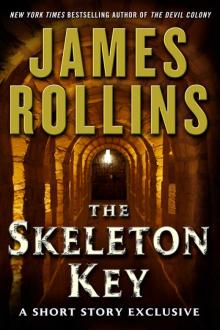 The Skeleton Key
The Skeleton Key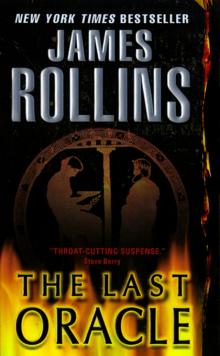 The Last Oracle
The Last Oracle The Judas Strain
The Judas Strain Black Order
Black Order Sandstorm
Sandstorm Ghost Ship
Ghost Ship The Devil Colony
The Devil Colony Subterranean
Subterranean The Doomsday Key
The Doomsday Key The 6th Extinction
The 6th Extinction Bloodline
Bloodline Jake Ransom and the Howling Sphinx
Jake Ransom and the Howling Sphinx The Midnight Watch
The Midnight Watch Map of Bones
Map of Bones The Demon Crown
The Demon Crown Deep Fathom
Deep Fathom Sigma Guide
Sigma Guide Kowalski's in Love
Kowalski's in Love Jake Ransom and the Skull King's Shadow
Jake Ransom and the Skull King's Shadow Excavation
Excavation The Seventh Plague
The Seventh Plague Altar of Eden
Altar of Eden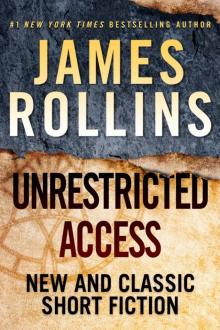 Unrestricted Access: New and Classic Short Fiction
Unrestricted Access: New and Classic Short Fiction Indiana Jones and the Kingdom of the Crystal Skull
Indiana Jones and the Kingdom of the Crystal Skull Crucible
Crucible The Eye of God
The Eye of God The Bone Labyrinth
The Bone Labyrinth The Last Odyssey: A Thriller
The Last Odyssey: A Thriller Unrestricted Access
Unrestricted Access Amazonia
Amazonia Blood Brothers: A Short Story Exclusive
Blood Brothers: A Short Story Exclusive Map of Bones: A Sigma Force Novel
Map of Bones: A Sigma Force Novel The Skeleton Key (sigma force)
The Skeleton Key (sigma force)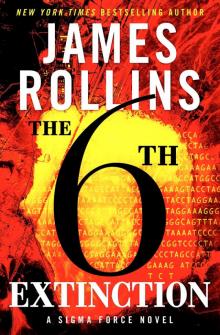 Sigma Force 10 - The Sixth Extinction
Sigma Force 10 - The Sixth Extinction Innocent Blood
Innocent Blood Map of Bones sf-2
Map of Bones sf-2 The Eye of God: A Sigma Force Novel
The Eye of God: A Sigma Force Novel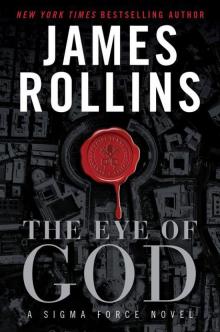 The Eye of God: A Sigma Force Novel sf-9
The Eye of God: A Sigma Force Novel sf-9 The Pit
The Pit Indiana Jones and the The Kingdom Of The Crystal Skull
Indiana Jones and the The Kingdom Of The Crystal Skull The Last Oracle (2008) sf-5
The Last Oracle (2008) sf-5 City of Screams
City of Screams The Doomsday Key and The Last Oracle with Bonus Excerpts
The Doomsday Key and The Last Oracle with Bonus Excerpts The Judas Strain sf-4
The Judas Strain sf-4 Blood Infernal
Blood Infernal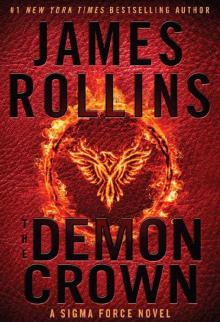 The Demon Crown: A Sigma Force Novel
The Demon Crown: A Sigma Force Novel War Hawk: A Tucker Wayne Novel
War Hawk: A Tucker Wayne Novel SANDSTORM sf-1
SANDSTORM sf-1 Bloodline: A Sigma Force Novel
Bloodline: A Sigma Force Novel Amazonia: a novel
Amazonia: a novel The Last Oracle: A Sigma Force Novel
The Last Oracle: A Sigma Force Novel City of Screams (the order of the sanguines)
City of Screams (the order of the sanguines)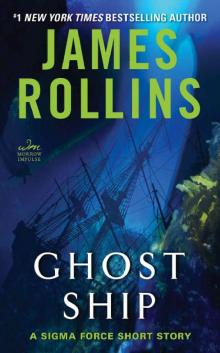 Ghost Ship: A Sigma Force Short Story
Ghost Ship: A Sigma Force Short Story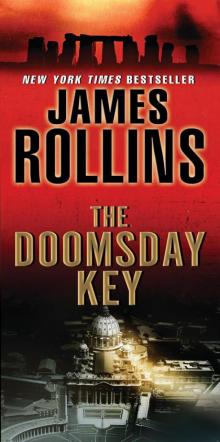 The Doomsday Key: A Sigma Force Novel
The Doomsday Key: A Sigma Force Novel